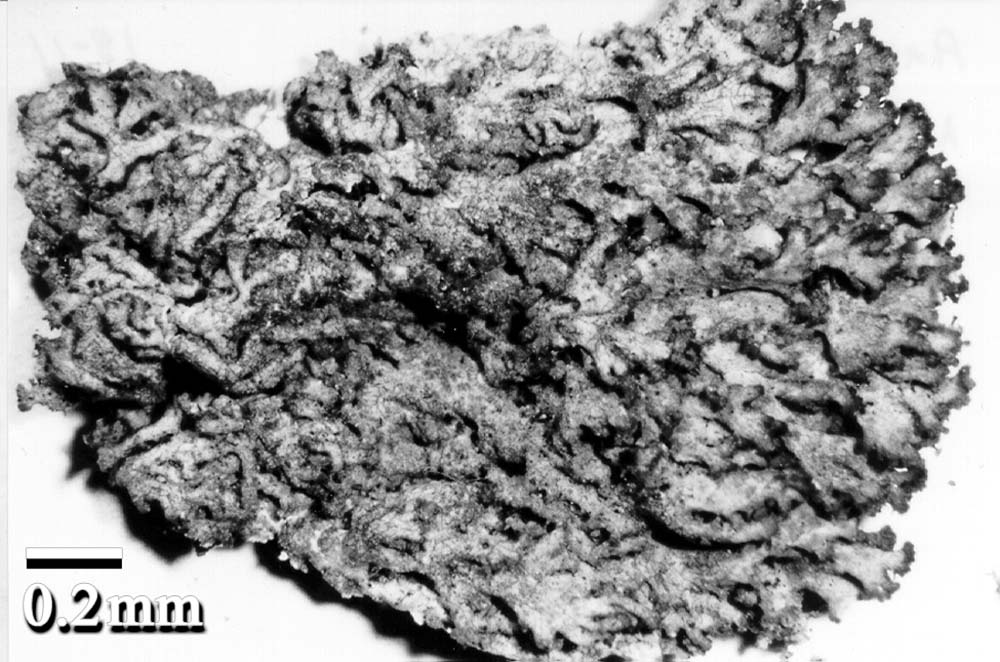
Consortium of Lichen Herbaria
- building a Global Consortium of Bryophytes and Lichens as keystones of cryptobiotic communities -
- Home
- Search
- Images
- Species Checklists
- US States: O-Z >
- US National Parks
- Central America
- South America
- US National Parks
- Southern Subpolar Region
|
Family: Physciaceae |
Nash, T.H., Ryan, B.D., Gries, C., Bungartz, F., (eds.) 2002. Lichen Flora of the Greater Sonoran Desert Region. Vol 1. Thallus: foliose to subfruticose, small to medium sized, moderately to very loosely attached, lobate lobes: linear-elongate to shorter and rounded or flabellate upper surface: dingy white or gray to dark brown, totally bare in some species but other species may have a weak and partial to almost complete pruina, or a tomentum of fine cortical hairs, or larger tapering cortical hairs near lobe ends, or marginal cilia upper cortex: prosoplectenchymatous medulla: white photobiont: primary one a chlorococcoid alga, secondary photobiont absent lower cortex: lacking or prosoplectenchymatous, but then sometimes only weakly organized and poorly differentiated from the medulla lower surface: pale or darkening; sparsely to rather densely rhizinate, the rhizines pale or darkening, simple or furcate to densely squarrosely branched Apothecia: with thalline exciple asci: subclavate to clavate, 8-spored ascospores: Physconia-type, brown, 1-septate, 25-46 x 13-23 µm Pycnidia: blackened and immersed conidia: bacilliform to short-cylindrical, 3.5-6 x ± 1 µm Secondary metabolites: terpenoids; apparently lacking typical phenolic substances Geography: primarily temperate, North America, Europe, Asia and Africa Substrate: bark or wood, rock or rarely soil. Notes: Anaptychia (sensu lato, including Heterodermia) has long been recognized by most authors as distinct from Physcia, based largely on the presence of a prosoplectenchymatous upper cortex (rather than paraplectenchymatous) and also by the different types of spores (Kurokawa 1962). Poelt (1965) segregated the genus Heterodermia, leaving in Anaptychia all those species with Physconia-type spores and lacking atranorin in the upper cortex. One genus at times confusable with Anaptychia is Physconia, which shares the distinctive spores and a K- upper cortex. Although these two genera dont seem extremely closely related, for some of their species there is really only one conclusive character that can be used to separate them: a prosoplectenchymatous cortex in Anaptychia, and a paraplectenchymtous or scleroplectenchymatous cortex in Physconia. |
Powered by Symbiota









